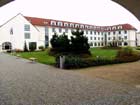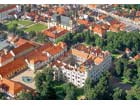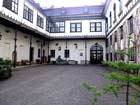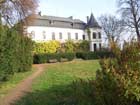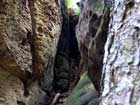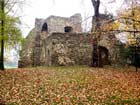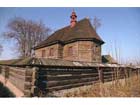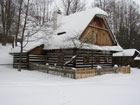Tourism/Tourism/Trips in the surrounding countryside
Trips in the surrounding countryside
Pardubice Region – basic information
The Pardubice Region is a table-flat countryside with a single but rather striking hill – Kunětická Mountain. It is a part of the so-called golden strip in the Czech Lands, the most fertile parts of the Elbe lowland. This territory is characterised with vast flowering meadows, historical irrigation canals and ponds. In the region, several protected areas are located, e.g. the natural reserve of Bukačka virgin forest, a charming park with sycamores and aged oaks at Choltice or typical countryside along the Elbe river in the surroundings of Lázně Bohdaneč (spa town). It is a region rich in monuments, which includes e.g. the Gothic-Renaissance castle and the historical centre in Pardubice, Kunětická Mountain castle, the Baroque palace at Choltice and a number of sacral constructions starting from the Romanesque church at Kojice and ending by the wooden church at Veliny. Due to its character, the Pardubice Region is a favourable part of the country for cyclists and sport fishermen.
www.pardubicko.info
This project is co-financed by the European Union - www.strukturalni-fondy.cz
Kunětická Mountain
The Kunětická Mountain castle, which was ordered to be built by Diviš Bořek of Miletínek, the royal administrator of the region, at the beginning of the Hussite wars, is a natural dominant of the local region. But the castle obtained its monumental character only after construction alterations performed by the Lords of Pernštejn in the 15th and 16th centuries. The castle spire is the highest point in the surroundings offering wonderful views starting from ponds in the Elbe region up to the Krkonoše mountains. It is regularly accessible during the season – similarly as the castle palace the premises of which are used for exhibition purposes. The slope of Kunětická Mountain is one of the places within the Pardubice Region with the richest occurrence of plant species. A large parking place is available below the castle, from which the undemanding climb to the castle yard takes about 15 minutes. You can also come to the place directly below Kunětická Mountain on board Arnošt of Pardubice – a ship anchoring in Pardubice next to the ČEZ arena. You can take your bicycle on board the ship, see the castle, enjoy beautiful views and then go back to Pardubice along the river.
Contacts:
State castle Kunětická Hora, 533 52 Staré Hradiště
Tel.: +420 466 415 428
e-mail: kuneticka.hora@cmail.cz
www.hradkunetickahora.cz
Gingerbread Cottage
The fairy-tale world below Kunětická Mountain near Pardubice. Honey experiences from the Gingerbread Cottage which include sightseeing in the Gingerbread Museum with the country town of Perníkov (Gingerbread Town), walking about a fairy-tale forest, etc.
Contacts:
Gingerbread Museum
V Perníkové chaloupce č.p.38
533 52 Ráby
Tel.: +420 466 612 474, +420 602 413 134
e-mail: info@pardub.cz
www.pernikova-chaloupka.cz
Lázně Bohdaneč – Peat Spa
The picturesque town is a sought-after visiting place first of all due to the local boggy spa facility established in 1897. The spa, where motor system diseases are cured, is dominated by a precious building complex dating from the beginning of the 20th century, designed by the architect Josef Gočár, surrounded by a large park open freely to the public. The building of the Renaissance town hall, modified in the Baroque style, has been preserved in its original layout from the old stages of construction development in Bohdaneč. The present Parish Church of St. Mary Magdalena was reconstructed in 1737, the tall prismatic spire dominating the town is the only part of the former medieval church preserved in the new monumental Baroque cathedral. A well-functioning information centre may be found at Lázně Bohdaneč.
Contacts:
Léčebné lázně Bohdaneč a.s.
Masarykovo nám. 6, 533 41 Lázně Bohdaneč
e-mail: obchod@llb.cz
Call centrum – info linka
Tel.: +420 466 860 860
www.llb.cz
Native House of the Veverka Cousins
František and Václav were cousins who lived at the village of Rybitví near Pardubice. František was born on 3rd March 1799 and was a farmer. He had a great technical talent. He made a winnower, understood mill machinery and is said to have mended clocks for the whole village. He wanted to construct new ploughing equipment, he thought it could be like a plane in which he would modify the form and inclination of the hook. But it was František’s cousin Václav, a blacksmith, who gave the swing-plough its definitive shape. But the invention turned out to be a failure. František became indebted, had to sell the family farm and moved to Břehy near Přelouč, where he also died on 12th February 1849. Václav moved to Bukovina near Dříteč, where he died only eleven days later than his cousin.
The Veverkas’ well-preserved house is a typical country settlement with one living room. A memorial plaque is installed on the house with the note: “This is the birthplace of Václav Veverka, the inventor of the swing-plough, on 10th December 1790”. In the garden there is a monument of the two cousins and a swing-plough monument stands in the place they ploughed for the first time in 1827.
Veliny – Wooden Church
St. Nicholas village church at Veliny together with the adjacent belfry is a unique architectural monument of folk architecture and painting in the 18th century. It was built in the place of an old wooden church in 1752 and decorated with painting inside. The church premises and the belfry are freely open to the public.
Contacts:
Village of Veliny
St. Nicolas church
Tel.: +420 466 682 187
www.veliny.cz/Historie.aspx#kostel_sv._mikulase
Kladruby nad Labem – Stud Farm
The stud farm at Kladruby nad Labem is world-famous due to horse breeding that is the oldest in the world. After its foundation in 1579, the stud farm was granted the status of imperial court stud farm specialised in the breeding of representative carriage horses for the court needs by emperor Rudolf II. Due to this breeding the unique population of Old-Kladrubian black horses which has been declared, together with the whole stud farm, a national cultural monument, has been preserved at Kladruby. The core of the stud farm is a castle building standing in the place of an old Renaissance construction, which was rebuilt in the Baroque style at the beginning of the 18th century and again after a large fire in 1757. At present, a castle gallery can be seen here with examples of interior equipment and other exhibits related to the stud farm development. Visitors to the stud farm are also able to view the stables with expert explanations as well as experience trips around the picturesque surroundings on horseback or in a carriage drawn by two or four horses.
Contacts:
National stud farm at Kladruby nad Labem
Tel.: +420 466 933 832-7
e-mail: kladruby@nhkladruby.cz , chovkoni@nhkladruby.cz
www.nhkladruby.cz
Slatiňany – Hippological Museum
The castle in Slatiňany is originally a Renaissance building from the end of the 16th century built in the place of an old fortress; the other construction alterations performed in the 19th century were done by the then owners – the Auersperg family. The castle, which is a national cultural monument and houses a unique hippological museum, is situated in a national landscape park from the beginning of the 19th century with the second richest collection of evergreen tree species in Eastern Bohemia. Wild Przewalski horses can run in the park and a horse stud with runs of Old-Kladrubian black horses that are bred at Slatiňany is situated nearby. Phone bookings can be made in advance to see the stud farm or go for a ride in a carriage.
Contacts:
Castle park No. 1, 538 21 Slatiňany
Tel.: +420 469 681 112
e-mail: zmk.slatinany@tiscali.cz
www.hippologickemuzeumslatinany.cz
Chrudim
An ancient royal town situated 11 km from Pardubice. The local Ressel Square (Resslovo nám.) is dominated by the archbishop cathedral of the Assumption of the Virgin dating from 1359 and a plague column. The Catherine Church from the second half of the 14th century or the two hundred years younger Mydlář House where the Museum of Puppet Cultures is currently located are also interesting. The old town hall building dates back to 1560 and you will also find a New-Town Fountain or can also visit the Regional Museum or Karel Pippich’s Theatre here.
Contacts:
Information centre
Old town hall
Resslovo nám. 1, 537 01 Chrudim
www.navstevnik.cz/mestska-pamatkova-zona
Barborka – Wooden Lockout Tower
A nearly fourteen-metre-high wooden lookout tower in the village of Horní Raškovice was built and opened to the public in 2004. The lookout tower is located near the Raškovice forest and in an interesting natural habitat of the former Raškovice quarries. Visitors may use two lookout platforms to enjoy the view of the country; the upper one is at a height of 10 metres with 47 stairs leading to it. At the top of the tower a view of not only the Iron mountains but also the Krkonoše and Orlické Mountains, or the countryside along the Elbe river opens up in front of you. In 2007, the lookout tower premises were completed with sculptures and wood-carved works.
Contacts:
Village of Svinčany
Tel.: +420 466 972 389
www.svincany.cz
Kočí
A village near Chrudim with the Church of St. Bartholomew from the 14th century with folk Renaissance and Baroque wall paintings. A covered wooden bridge from 1721, reconstructed in 1961, leads to the church. The local belfry is from the 17th century, but the bells installed in it are even older.
Chrast
The Baroque palace, originally built by Albrecht Slavata of Chlum and later by Markéta Berková, née Trčková, in the Renaissance style between 1579 and 1605. After 1664 it was a summer residence of bishops from Hradec Králové, reconstructed and completed with other Baroque wings. Interiors are decorated with large paintings of exotic countries with animals or medallions with Roman motifs.
Contacts:
www.navstevnik.cz/chrast
Veselý Kopec (Merry Hill)
A settlement of freely dispersed farm buildings in the original landscape area near Hlinsko. Examples of living conditions, the way of life and work of small farmers, and water-driven technical equipment. Numerous programmes providing information about folk crafts, customs as well as folk culture are organised here.
Contacts:
Vysočina – group of folk buildings
Veselý kopec u Hlinska
Tel.: +420 469 326 415
e-mail: sls.vysocina@atlas.cz
www.vesely-kopec.cz
Choltice
A small country town situated between the area around the Elbe river and the Iron Mountains. The local palace was built in the place of a former Renaissance fortress, the remnants of which are still found in the north-east part of the palace yard, in the last quarter of the 17th century. The palace yard is dominated by St. Romedius Chapel, the most important Baroque monument in the surrounding area. Extraordinarily valuable painting, wood-carving and stucco decorations, in which Italian artists participated, were preserved in the original form in the chapel completed in 1692. A municipal museum is installed in a part of the castle and the romantic character of the palace premises is completed with a freely accessible park with a pond cascade.
Contacts:
Choltice Palace
Village of Choltice
Tel.: +420 466 052 343
e-mail: marie.fizova@khspce.cz
www.choltice.cz/page.php?pageid=32
Heřmanův Městec
The most important monument at Heřmanův Městec is the Church of St. Bartholomew reconstructed in the period from 1756 to 1761. A synagogue newly reconstructed by František Schmoranz from 1870 and a former Jewish school where Gallery Cyrano with a permanent exhibition of paintings and sculptures by 20th century authors (Čapek, Zrzavý, Kupka, Šíma, Štýrský, Jíra, Janeček, Gutfreund and others) is located may be found here. The cemetery with 1100 tombs, some dating back to the 16th century, is a Jewish monuments. From the square at Heřmanův Městec you can enter a forty-hectare landscape park with a palace, which adjoins an even larger natural park. The sports hall from 1998 and the outdoor pool complex and campsite at Konopáč are used by people from the town and from the surrounding area.
Contacts:
Info-Centre at Heřmanův Městec
Tel.: +420 469 625 147
www.hermanuv-mestec.cz
Fortress at Svojšice
In the Middle Ages the foothills of the Iron Mountains were the region of less important knight noblemen who built fortified yards and fortresses as their residences. The best preserved medieval fortress in the area around Pardubice is found in the middle of the village of Svojšice. Its solid stone walls date back to the 14th century, and further construction alterations took place here even in the Renaissance period. It served as a mansion till the Thirty Years’ War. The fortress premises are accessible and include also a monument devoted to Julie Havlíčková, the wife of the well-known Czech journalist and politician Karel Havlíček Borovský.
Holice – Monument of Dr. Emil Holub
The town of Holice is place worth visiting thanks to the local museum exhibition devoted to the well-known traveller Dr. Emil Holub, who collected a lot of natural-science and ethnographic materials from African countries in the 1870s and 1880s. But Holice also boasts a precious architectural monument – St. Martin's Parish Church built in the place of a former medieval structure in the first half of the 18th century.
Contacts:
Cultural facility in the town of Holice
Holubova 768, 534 01 Holice
Tel.: +420 466 920 476
e-mail: kd@holice.cz
www.kd.holice.cz/pamatnik_emila_holuba
Litomyšl
The palace in Litomyšl, a national cultural monument and UNESCO monument, is one of the most important Renaissance buildings in the Czech Republic. The history of the settlement on the palace hillock and of the later palace is inseparably linked with the town history. The palace and the old town attract thousands of tourists to Litomyšl every year.
Contacts:
Smetanovo nám. 72, Litomyšl
Tel.: +420 461 612 161
e-mail: ic@litomysl.cz
www.litomysl.cz/ic
www.unesco-czech.cz/litomysl/predstaveni
Toulovec’s Stables (Toulovcovy Maštale)
The protected natural creation located among Budislav, Proseč and Nové Hrady fifteen kilometres from Litomyšl and Polička. Wind and water erosions transferred local rocks from Upper Cretaceous sandstone of sea origin into bizarre shapes. The place got its name after a marauding knight Vavřinec Toulovec, who is said to have hidden with his group in local rock seams. Town Stables (Městské maštale), Columbus' Egg (Kolumbovo vejce), Pulpit (Kazatelna), Dudych’s cave (Dudychova jeskyně), Noblemen’s Table (Panský stůl) are the most attractive formations. The terrain is accessible through a dense network of marked paths providing an opportunity for circular walks.
Contacts:
www.mastale.cz

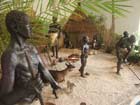
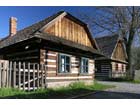
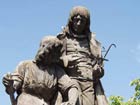
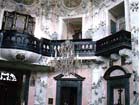
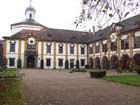
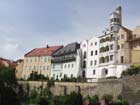
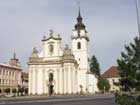
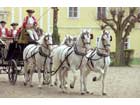
.jpg)
.jpg)
